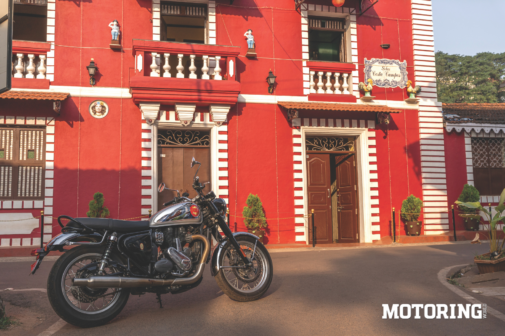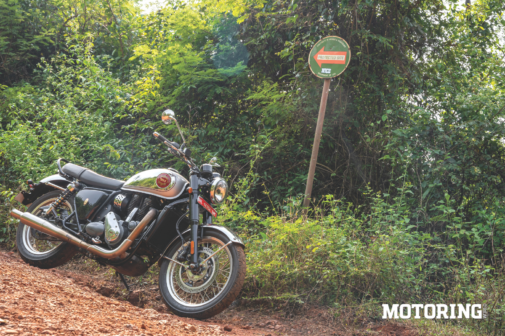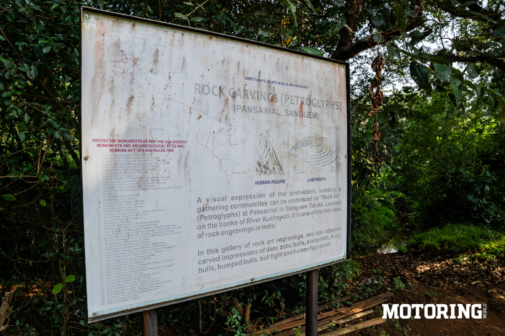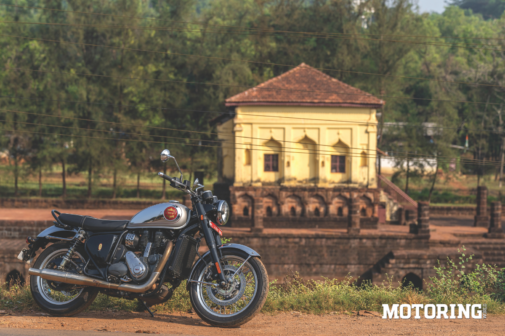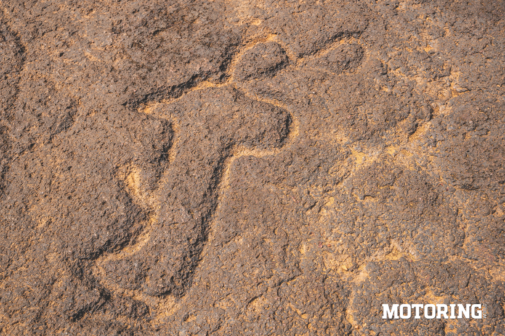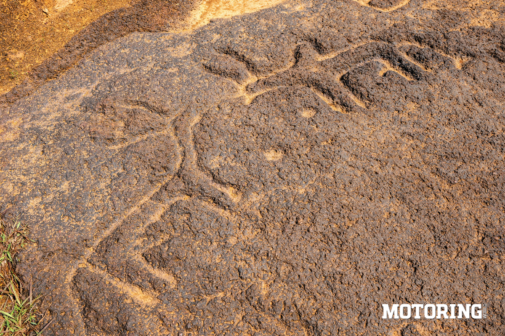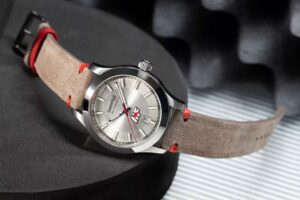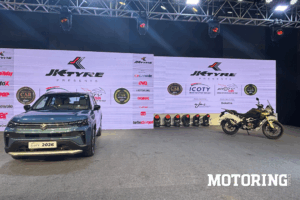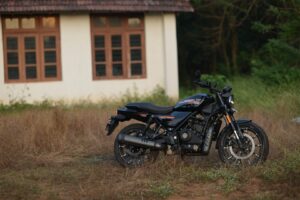Humankind and time have been in this eternal battle, one that’s deep rooted within us. Though time is this unstoppable force that will relentlessly move ahead, we find ourselves continuously striving to control, defy, or make the most of it, don’t we? Fortunately, we have motorcycles on our side fighting the same battle. And of course there’s Goa — the place that has this strange power of slowing down time… except that one day when instead of unwinding, the BSA Gold Star 650 and I ended up winding back the clock.
It all started with us visiting the Fontainhas in Panjim with a simple agenda — taking good pictures of the Goldie against the backdrop of Goa’s Latin Quarter. This neighborhood is possibly the most visible legacy of the four-and-a-half-century Portuguese rule over the state. What started as Portuguese law that mandated every urban resident to paint their house after the monsoons became a tradition that is followed till date.
And the building you see in the picture has a lot more to say than just about that tradition. The roosters on the building are the national symbol of Portugal, symbolising honesty, trust, honour and integrity. If that piqued your interest, you should read up the story of how the Barcelos Rooster became their national symbol. Notice the statues of the soldiers on the balcony? Those marked that the house belonged to someone who served in the army.
Such symbols play a vital role in the Gold Star’s life, too. For starters, the three-crossed-rifles logo was used when BSA — Birmingham Small Arms — used to manufacture machine-made guns decades before it started making motorcycles. And the golden star motif on the tank, and even the name, came to be as a tribute to Wal Handley’s feat of clocking 160 kph at the Brooklands circuit with a BSA Empire Star that earned him a traditional ‘gold star’ badge.
Though this iteration of the Gold Star is just about four years old, BSA has put in a lot of efforts to make it identical to the original bike that ceased production in 1963. Everything from the fork covers, the paint job, the way the fenders are mounted, to the engine case, is the traditional Gold Star fashion.
While I sat there admiring the view, suddenly a herd of photographers and their muses started filling up the quaint lanes of the Fontainhas, and that was our cue to leave in search of a quieter place. The Gold Star seemed more than happy to oblige. Unlike most retro motorcycles that are built to be slightly slow and calm, this BSA was raring to go right from the start. The Rotax-sourced 652cc single-cylinder may be old, but it still hasn’t lost its charm. An hour and 30 km later, we found ourselves staring at another peaceful and calm place — the Safa Mosque.
A small fence and a lawn stood between the chaos of the city and the tranquility of the mosque. I couldn’t take the Gold Star any closer to the structure itself, but from where I stood, I could see the grandeur of the place just fi ne. I was lost in the serenity of the well-mowed lawn that surrounded the single-chamber mosque, the laterite-stone tank filled with turquoise water until a blaring horn of a bus brought me back to reality — I was on a busy road near Ponda.
Before the Portuguese, the state was under the rule of the Sultanate of Bijapur. This mosque was one of the 24 (or 27, as some sources suggest) mosques that adorned emperor Ibrahim Adilshah’s kingdom. Surprisingly, the mosque wasn’t flocking with tourists. No, I am not complaining. This place has stood the test of time quite brilliantly, considering most of the other mosques in Goa were destroyed during the Portuguese inquisition between 1560 and 1812. But surviving the mayhem of today’s tourists? I could only imagine what it could have done to this monument — people picnicking in the lawn, a garbage-filled tank, and proclamations of love scribbled on stone. As it turned out, the last part isn’t a new thing.
Leaving the busy road, we made our way further away from civilisation. New highways and bridges eventually became a blur in the mirrors, and all that lay ahead were broken narrow roads. The Gold Star’s firm rear suspension didn’t shy away from sending jolts to my spine every time I went a little fast over a bump. Assuming that even the Goldie wanted to enjoy the Goan countryside, I slowed down. We passed big farms, small villages, and eventually a small board by the Directorate of Archives & Archeology that pointed towards a protected site.
We continued to follow the signs, and with each passing board, we were leaving every trace of human life behind. The last person we saw was about 10 before ending up in a clearing. At the other end of the clearing was a path led to a quarry. After passing it, I found a small cabin and a puzzled security guard who paused whatever he was doing to observe me.
As soon as I turned off the engine, I could suddenly hear the silence around us. Apart from an occasional chirp and what I believe was monkey(s) whooping, there was nothing around that could threaten the peace of this place.
In fact, Rivona was untouched for a long time until a flood in 1993 washed away the soil to reveal petroglyphs that possibly date back to 10,000 years ago. Over 100 figures carved into the laterite river bed depicting different animals, humans and weapons surfaced. The Archeological Survey of India (ASI) took over the site, finding more evidence of a long-lost history. Though we were the only people at the site that day, the guard informed us that we were the fourth set of tourists to arrive. According to him, mostly foreigners visited the place, and only a few informed Indians dropped by.
The Gold Star had to be parked at the site’s boundary, and I had to explore the petroglyphs on foot. Not in my wildest dream could I have thought that something that detailed could be carved into the hard stone using the primitive tools that existed in the Mesolithic era. And it was not just the drawings, but properly cut out blocks and ‘rooms’, some of which seemed to be used for bathing, while some that were away from the river bed had stairs and a section that could have been the kitchen.
Walking back to the Gold Star, I came across a labyrinth chiselled on the stone. While it may seem like just another drawing, similar ones have been found across Europe, America and the Mediterranean region. Most common interpretations are about spiritual journeys, the circle of life and death, and even navigation. But what was even more puzzling was its use as a calendar. The drawing may have served as an astronomical marker to track celestial events. Guess, mankind’s battle with time goes way back than I had thought.










